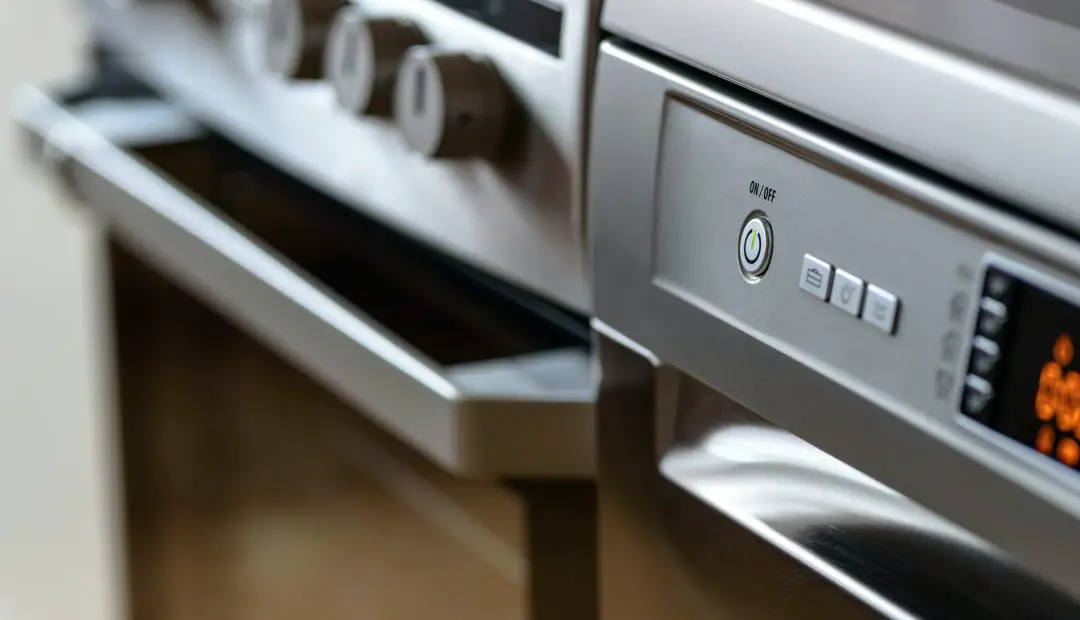Dishwasher not used for 3 years? If you’re wondering how to get it back in working order, you’re not alone. Many people find themselves in a similar situation, either because they’ve moved into a home with an unused appliance or simply didn’t need to use the dishwasher for an extended period.
This article guides you through the steps necessary to safely and efficiently get your dishwasher running again.

Inspect the Dishwasher
It’s crucial to give your long-neglected dishwasher a good look-over before powering it on. Ignoring this step could result in unforeseen problems, such as water leaks or electrical issues, that may complicate the reactivation process.
Step 1: Unplug the Dishwasher
Why It’s Important: Electrical safety should always be your first concern when dealing with appliances. Unplugging the dishwasher ensures that you won’t accidentally turn it on or experience an electrical shock during your inspection.
How to Do It: Locate the power cord, which usually extends from the back of the machine to an electrical outlet, and gently unplug it. If the power cord is hard to reach, you may need to slightly pull the dishwasher away from the wall for easier access.
Step 2: Check for Physical Damage
Why It’s Important: Damage to hoses or electrical connections can lead to water leaks or electrical malfunctions, respectively. Identifying these issues in advance can help you decide whether professional repairs are needed.
How to Do It: Look over the hoses, usually located at the back or bottom of the unit. Check for any cracks, brittleness, or signs of leakage. Also, examine the electrical cord for fraying or damage. If you spot any problems, it might be best to consult with a technician for repairs.
Step 3: Clean the Filter
Why It’s Important: A dirty or clogged filter can impede water flow and reduce the cleaning effectiveness of your dishwasher.
How to Do It: Open the dishwasher and locate the filter, typically found at the bottom of the machine. Remove it by turning or unlocking it as per your dishwasher’s manual.
Rinse the filter thoroughly under warm running water. If it’s particularly dirty, you can use a soft brush to gently scrub away any stubborn grime. Once it’s clean, reinstall it back into the dishwasher.
Step 4: Run a Vinegar Cycle
Why It’s Important: Over time, dishwashers can accumulate grime, soap scum, and even mold. A vinegar cycle will naturally disinfect the machine and help break down any mineral buildup.
How to Do It: Fill a dishwasher-safe cup with white vinegar and place it on the top rack of the empty dishwasher. Close the door and run a hot-water cycle. The vinegar will disperse throughout the cycle, providing a thorough cleaning.
Step 5: Check for Leaks
Why It’s Important: Water leaks can cause structural damage to your home and should be addressed immediately.
How to Do It: After the vinegar cycle is complete, open the dishwasher and remove the cup. Then, carefully inspect the area around the appliance, including the floor and adjacent cabinets, for any signs of water leakage.
Should you discover any, it could indicate that your hoses or connections need tightening, or even replacing. In this case, you may wish to consult a professional.
Step 6: Run a Detergent Cycle
Running a detergent cycle serves as the ultimate test to confirm that your dishwasher is functioning as it should, cleaning dishes effectively. It’s the final hurdle before your dishwasher can be considered fully operational again.
How to Do It: Place a dishwasher-safe bowl or cup filled with dishwasher detergent on the bottom rack. It’s wise to keep the dishwasher empty for this initial detergent cycle, so you can better judge its cleaning effectiveness without the distraction of dishes.
Close the dishwasher, select a regular wash cycle, and let the machine run through a full cycle. Once completed, inspect the inside to ensure the detergent was dispersed and that there are no soap residues.
If everything looks good, you’re ready to move on to the next step. If not, you may need to consult your user manual or seek professional assistance for possible troubleshooting steps.
Step 7: Load Your Dishes
Now that you’ve revived your dormant dishwasher and confirmed its operational status, it’s time to start enjoying the convenience of not having to wash dishes by hand.
How to Do It: Begin by pre-rinsing any heavily soiled dishes. Then load your dishes according to the dishwasher’s manual to maximize cleaning efficiency.
Typically, larger and more soiled items go on the bottom rack, while glasses, cups, and less soiled items go on the top.
Add the appropriate amount of dishwasher detergent into the detergent dispenser. Close the door, select your desired wash cycle, and start the dishwasher.
For more articles on dishwashers, click here: Dishwasher Problems and Solutions: Your Ultimate Guide to Hassle-free Dishwashing
Conclusion: Dishwasher Not Used for 3 Years
Reviving a dishwasher that hasn’t been used for 3 years can seem like a daunting task, but with a systematic and careful approach, it’s entirely achievable.
By following the steps laid out in this guide—from unplugging and inspecting the machine to running test cycles—you can be confident in safely and effectively bringing your dormant appliance back to life.
The journey from inspection to loading your dishes has been designed to be thorough, to catch any potential issues that might have developed during the extended period of inactivity.
It’s important to always consult your user manual and consider seeking professional help if you encounter any difficulties or uncertainties along the way.
With your dishwasher now operational, you can once again enjoy the convenience and efficiency that this valuable appliance brings to your daily routine.
Remember, each step serves a purpose, either to ensure your safety, the machine’s effectiveness, or both. Now, go ahead and enjoy your newly reactivated dishwasher—you’ve earned it!
